- Home
- James A. Michener
Rascals in Paradise
Rascals in Paradise Read online
2014 Dial Press Trade Paperback Edition
Copyright © 1957 by James A. Michener and A. Grove Day
All rights reserved.
Published in the United States by Dial Press Trade Paperbacks, an imprint of Random House, a division of Random House LLC, a Penguin Random House Company, New York.
DIAL PRESS and the HOUSE colophon are registered trademarks of Random House LLC.
Originally published in hardcover in the United States by Random House, an imprint and division of Random House LLC, in 1957.
eBook ISBN 978-0-8041-5151-1
www.dialpress.com
v3.1
To Mari and Virginia
Contents
Cover
Title Page
Copyright
Dedication
Map
To All Who Seek a Refuge
1. Rascals in Paradise: The Globe Mutineers
2. Charles I, Emperor of Oceania
3. Coxinga, Lord of the Seas
4. Gibson, the King’s Evil Angel
5. Bligh, Man of Mutinies
6. Doña Isabel, the Lady Explorer
7. Bully Hayes, South Sea Buccaneer
8. Louis Becke, Adventurer and Writer
9. Will Mariner, the Boy Chief of Tonga
10. Leeteg, the Legend
Bibliography
Other Books by This Author
About the Author
To All Who Seek a Refuge
In an age of anxiety men seek a refuge. Because of some deep urge, constant throughout history, troubled men traditionally dream of islands, possibly because the smallness of an island invites the illusion that here the complexities of continental societies can be avoided, or at least controlled. This is a permanent, world-wide dream.
When the island chosen for refuge happens to lie in the South Pacific, a colorful body of romance often helps to make the idea of escape an absolute obsession. Then, if the chosen island is reputed to contain lovely and uninhibited girls, the obsession is apt to degenerate into a monomania. And if the girls are Polynesians, the dreamer is truly lost.
The authors of this book can testify to the allure of the Pacific. One is a college professor who has served as head of a large department at the University of Hawaii. He has learned that three days after a blizzard in Minnesota, or a week after the explosion of the newest horror bomb, or three weeks after the onslaught of general bad news, his mail will be flooded with applications from professors on the United States mainland who think they could be happy only on a Pacific island. The number of Americans who believe that the islands possess some remedy for our day’s malady is staggering.
The other author has reported generally upon the Pacific, and as a result receives a constant stream of mail from citizens of many nations who have grown weary of atomic bombs, dictators, taxes and neurasthenia. His correspondents are united in their conviction that only in the fabled islands of the South Seas can they find the fulfillment that their own society denies them. Were each of the islands a continent, there would still be insufficient room for the defeated people of the world who require refuge.
In fact, this chimerical concept of a haven from the world’s dismay is so persistent that the present authors have felt obligated to review the facts. In this book they propose to inspect the histories of certain strong-natured adventurers who actually did flee to the Pacific, and they hope to find from the lives of these worthies some answers to several questions. Was the great ocean ever the refuge it has been popularly supposed to be? Is it such a refuge today? Are those of us who dread the atomic age well advised in seeking haven on some distant atoll?
This book chronicles ten instances in which men—and one woman—sought solace and fulfillment in the broad Pacific. Some fled there to escape complex and overmastering social forces resembling those under which we struggle to survive. Others, driven by the urge to power, hoped to set up private kingdoms where they could rule in accord with their desires. Still others sought refuge in the lonely ocean because they had more or less exhausted the resources of their civilizations, and these men resemble the schizophrenics of our contemporary society, at home nowhere, lured constantly by an alien dream. The remainder were downright juvenile delinquents who prove that this ugly manifestation of a disrupted society is a timeless rather than a contemporary phenomenon.
The characters whose profiles are here sketched differ from each other in most ways. The periods when they play their parts range from 1595 to 1953. The roster includes a Spanish lady explorer, a Chinese-Japanese pirate and filibuster, an Australian writer, a British naval officer, a French nobleman, a young English privateersman and four Americans: a slavedriving buccaneer, a politician of the Pacific, an artist, and a young Nantucket whaleman. The scenes of their operations cover not only the open ocean but also land areas from Peru to the China coast and from Hawaii to New Zealand, with additional episodes played against such backgrounds as the Marquesas, Tahiti, Samoa, the Dutch East Indies, Tonga, the Solomons and Formosa.
Yet, with the exception of Captain Bligh, these ten adventurers had two things in common. They were convinced that, at least for the while, some other part of the world held richer promise than their homeland. And each settled upon the Pacific as his area of escape.
In dealing with these dreamers, we were constantly reminded of a fabled occurrence in recent Pacific history. In the 1930’s there was in Australia a learned gentleman who clearly foresaw that a great war was about to break over the world. He had no desire to participate in this foolish war, but he had to conclude from his studies that Europe was going to explode and that the resulting fires would involve Africa and much of Asia. With extraordinary clairvoyance he deduced that Australia, left unprotected because the military men were preoccupied with Europe, would surely become a temptation to Asia and would probably be overrun.
Wishing to avoid such a debacle, he spent considerable time in determining what course a sensible man should follow if he wanted to escape the onrushing cataclysm. He considered flight into the dead heart of Australia, but concluded that although he could probably hide out in that forbidding region, life without adequate water would be intolerable. Next he contemplated removal to America, but dismissed this as impractical in view of the certainty that America would also be involved in the war.
Finally, by a process of the most careful logic, he decided that his only secure refuge from the world’s insanity lay on some tropical island. He reasoned, “There I will find adequate water from the rains, food from the breadfruit and coconut trees, and fish from the lagoons. There will be safety from the airplanes which will be bombing important cities. And thanks to the missionaries, the natives will probably not eat me.”
Fortified with such conclusions, he studied the Pacific and narrowed his choice of islands to the one that offered every advantage: remoteness, security, a good life, and a storm cellar until the universal hurricane had subsided.
Thereupon, in the late summer of 1939, one week before Germany invaded Poland, this wise Australian fled to his particular South Pacific refuge. He went to the almost unknown island of Guadalcanal.
This book relates the adventures of other people who in their days of hope or torment fled to their obscure Guadalcanal, where, they were convinced, perpetual ease and fulfillment awaited them.
1
Rascals in Paradise: The “Globe” Mutineers
His name was Samuel B. Comstock, harpooner, of Nantucket, Massachusetts, and he is remembered today because at the age of twenty-two he engineered the most horrible mutiny in the annals of the Pacific. Compared to his gruesome one-man uprising, more notorious ones like that of the Bounty seem commonplace and lacking in pas
sion.
Sam Comstock was a Quaker, son of a respectable schoolmaster of Nantucket The blond-haired, sallow-faced boy had his early training at a fine Quaker school, the Nine Partners, in Dutchess County, New York, where his father was teaching at the time. Here he learned mathematics, reading and other basic subjects which constituted an education for young gentlemen of the day, but the lesson that completely gripped his imagination, and which in time set fire to his brain, was one he heard by the fireside while growing up in Nantucket.
Captain Mayhew Folger, a resident of the town, used to thrill the youngsters with the amazing story of how in 1808, as master of the sealer Topaz, he had by chance discovered on lonely Pitcairn Island the survivors of the Bounty mutiny against Captain William Bligh. Young Sam Comstock listened with intense concentration as the story of this famous mutiny unfolded.
In Captain Folger’s version, the inescapable moral of this yarn was that mutiny never pays, for he described the pitiful aftermath that transpired on Pitcairn, where the successful mutineers quarreled about their native women and brutally stalked one another to death or fell to the muskets and spears of the brown men whose women had been taken.
Young Sam did not listen to this part of old Captain Folger’s narration, for dreams of mutiny, high adventure on the seas and sovereignty over some savage island had already inflamed his imagination. He was impatient to be off.
His first sea voyage was a relatively tame one. At thirteen he ran away and joined an inconspicuous ship which carried cargo from New York to Liverpool, but he quickly ditched this job. He had heard that if a boy was to gain great adventure, he must join the whalers.
Sam was fifteen, his education behind him and the blessings of his proper Quaker parents upon him, when he trod the deck of his first whaling ship. His inaugural trip was exciting enough to please even Sam, for in the first months of the voyage the ship was seized by Chilean pirates. Sam, thrown ashore in South America, beat his way back to Nantucket.
Ablaze with dreams, he haunted the water front until, in 1819, he found a berth with the whaler Foster, new-built and starting on her maiden voyage. On her he first saw the thundering expanse of the South Seas. From her decks he first spotted a lonely tropical island, rising slowly through morning mists. We are not required to speculate on the deranging effects of such sights on Sam Comstock, for it is recorded that on the voyage he rushed up to Captain Shubael Chase of the Foster and pleaded to be set ashore at any one of the islands the whaler was passing. Captain Chase ridiculed the idea and refused.
But Sam never overcame that first almost uncontrollable urge to break loose, invade an island and establish his own kingdom. Pondering the rude manner in which the captain had rejected his friendly request to be put ashore, Sam, who was a brooding boy incapable of forgetting a slight, concluded that there was only one way by which he might succeed in his life’s dream. He would have to murder the entire officer corps of some ship, seize it, sail it to some island paradise and then murder the survivors one by one until only he remained, as king.
Sam’s plan had three virtues. It was so bizarre that no one would suspect him of it. It was simple and straightforward And, as we shall see, it was completely practical.
It is possible that Sam contemplated putting his master design into operation against Captain Shubael Chase, in which case Comstock’s savage and improbable tale would have lived in history as the mutiny of the Foster; but Sam was a wily lad and was the first to realize that as a mere youth of eighteen he lacked one of the prime essentials for success as a mutineer. He could not navigate and would thus be at the mercy of whomever he stationed beside the helmsman of a captured ship.
Accordingly, Sam became a model young mariner. He studied navigation diligently, practiced the difficult art of harpooning until he was one of the best hands in the Pacific, learned to ingratiate himself with ships’ crews, and studied patiently for the day when he would commandeer his own ship and send it hurtling through the waves toward some South Pacific paradise, of which he would be king.
When the Foster returned to Nantucket, at the end of a successful cruise, it deposited on the docks of that famous port a trim, twenty-year-old harpooner with curly blond hair a little longer than usual, eyes a bit sharper and a burning determination that would never subside as long as he lived.
For several weeks young Sam Comstock loafed along the water front, trying to select a ship for his big adventure. Like a cautious trader picking a horse, he inspected, listened and waited. Then, not long before his twenty-first birthday, he found his ship.
The famous whaler Globe, rich in incident and records of sperm oil, was being refitted in Nantucket waters, and Sam Comstock’s heart beat wildly. For the Globe, only four years before, had opened up new whaling grounds a thousand miles west of Peru, and she was a ship on which any young man would have been proud to sail. Eagerly Sam presented his papers and was signed on as boat steerer, for a cruise of two or more years through the Pacific His hour had arrived.
Whaling, when Sam Comstock decided to use it for his purposes, was the great American industry. Its ramifications were manifold. For example, the nation was lighted by whale-oil lamps or spermaceti wax candles. Machinery was lubricated by sperm oil, which was also used to make soap and paints. Ladies of fashion were scented with an essence of ambergris, coughed out from the stomach of a sick whale. Their crinolines and bodices were stayed with whalebone.
Big fortunes were made pursuing the largest of all mammals through the most distant oceans. But although there were many families of whale, only two provided real riches: the sperm whale and the right whale. The sperm was found in the more temperate waters of the world. He averaged forty to fifty feet in length, but sometimes ran to eighty-five. A lucky captor might ladle out of the monster’s head case as much as thirty barrels of waxy oil. Blubber from his hulking body, when rendered out in kettles on the smoky half-deck, would average 125 barrels of oil, sometimes twice as much. His cousin, the right whale, was found more often among the bergs of the Arctic or Antarctic, and was almost as huge as the sperm. The right whale was sought not only for his oil but also for whalebone. Hundreds of thin blades of this flexible stuff hung in his maw, to be used for umbrella ribs and corset stiffeners. At one time whalebone brought five dollars a pound.
Killing any whale was dangerous work, but killing a sperm whale was especially dangerous. His toothed jaws were quite capable of splintering the hull of a double-ended boat, and tossing out the seamen in the topsy-turvy fashion that Messrs. Currier & Ives loved to depict. The right whale was less dangerous than the sperm, but could defend himself by thrashing his mammoth tail. An old whaling maxim ran: “Beware of a sperm’s jaw and a right whale’s flukes!” But the rewards were so great that mere men volunteered to row their frail boats close enough to Behemoth to strike his vitals with a needlelike harpoon, and then pursue him with lances until the sea was crimson and the waves violent from his death struggle.
The Pacific, from 1820 to 1870, was to be the main hunting ground of the whalers. Not long after Sam Comstock’s day, more than two thirds of the world’s whaling fleet prowled this ocean. Most of the ships were American, and most of these were from a few towns on the New England coast The greatest whaling port, of course, was Nantucket, on an island south of Cape Cod. In the seventeenth century, whaling had been carried on there as an offshore venture by boats which put out from town. But later the seven seas became the Nantucketer’s pasture; his herd was Leviathan. In the 1820’s Nantucket sent out about seventy ships a year to pursue the whale.
It was a Nantucket ship, the Equator, that along with the Balaena of New Bedford was the first American whaler to reach Honolulu, the tropical town that later became headquarters for the Pacific whaling industry. In 1819 these two ships killed a whale off Hawaii. Another Nantucket vessel, the Maro, was the first American whaler to cross the middle Pacific; in company with the Syren of London it discovered the famous grounds that teemed with whale eastward of Japan. Soon th
e other main Pacific grounds were discovered. They were scattered within a rough triangle from Cape Horn, at the foot of South America, west to New Zealand and north—including the “on Japan” grounds—to the Arctic, beyond the freezing waters of Bering Strait. Although many whaling operations had to be carried on in cold waters, in winter the favorite cruising belt was along the Equator, where a counter-current stirred up the rich ooze of the ocean floor and attracted the whales. The trade was big business. In the year 1852, for example, the masts of 131 whale ships forested the port of Honolulu, and a man might clamber from one end of the harbor to the other across the decks of the anchored vessels.
That was before the decline—for the Yankee whalers became so energetic that they steadily fished out even the world’s oceans. Originally a ship could fill its hold with oil in three months; but soon after Sam Comstock’s time a voyage might require three years, or even four, before the return home. Between 1835 and 1872, in the boom years, almost three hundred thousand whales were killed around the world.
The slaughter was a tragedy of waste. The ship Hope in 1844 reckoned that only one whale out of every three killed was saved; the rest sank or drifted away. Another vessel lost twenty out of thirty-one killed. Whalers said that not more than half of all they killed could be taken into the ship, and not more than one fifth of those struck were secured.
The lack of skilled seamen to operate the ships and handle the harpoons helped speed the decline of a great industry. The life was so hard that men would not sign on unless they were kidnaped in a drunken coma, and desertions were frequent—particularly in the Pacific, where men were lured ashore by visions of dusky sweethearts and a soft life under shimmering palms. But the death blow to the whaling trade came when the first successful oil well was drilled in Pennsylvania in 1859 and kerosene began to supplant the whale-oil lamp. Today, of course, spurred by the world’s need for edible oils, whaling is once more big business, and the famous Pacific grounds now play host to Norwegian, Russian and Japanese whalers.

 Mexico
Mexico The World Is My Home: A Memoir
The World Is My Home: A Memoir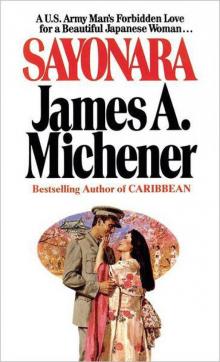 Sayonara
Sayonara Chesapeake
Chesapeake The Novel
The Novel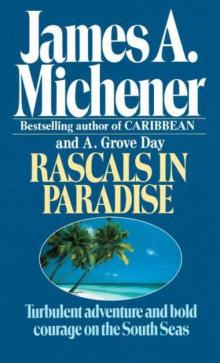 Rascals in Paradise
Rascals in Paradise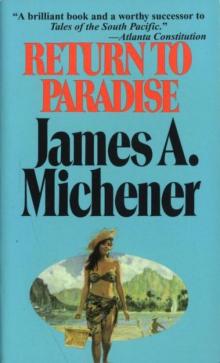 Return to Paradise
Return to Paradise Presidential Lottery: The Reckless Gamble in Our Electoral System
Presidential Lottery: The Reckless Gamble in Our Electoral System The Source
The Source Poland
Poland Space
Space Caravans
Caravans Creatures of the Kingdom: Stories of Animals and Nature
Creatures of the Kingdom: Stories of Animals and Nature Iberia
Iberia Hawaii
Hawaii The Watermen: Selections From Chesapeake
The Watermen: Selections From Chesapeake Report of the County Chairman
Report of the County Chairman The Covenant
The Covenant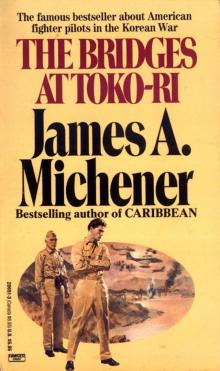 The Bridges at Toko-ri
The Bridges at Toko-ri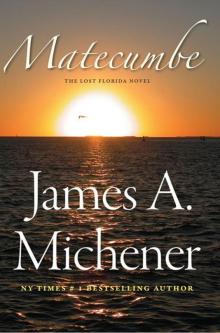 Matecumbe
Matecumbe Journey: A Novel
Journey: A Novel Centennial
Centennial Sports in America
Sports in America Texas
Texas Miracle in Seville
Miracle in Seville This Noble Land: My Vision for America
This Noble Land: My Vision for America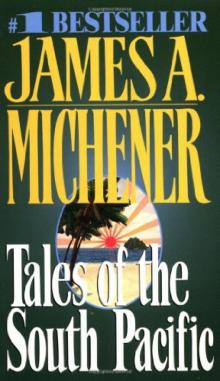 Tales of the South Pacific
Tales of the South Pacific Bridges at Toko-Ri
Bridges at Toko-Ri Space: A Novel
Space: A Novel Presidential Lottery
Presidential Lottery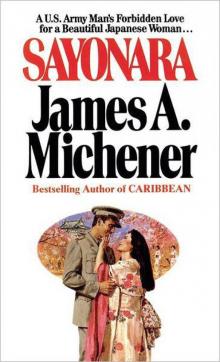 Sayonara: A Novel
Sayonara: A Novel This Noble Land
This Noble Land The Covenant: A Novel
The Covenant: A Novel Miracle in Seville: A Novel
Miracle in Seville: A Novel The Bridge at Andau
The Bridge at Andau Source
Source The Source: A Novel
The Source: A Novel Journey
Journey Recessional: A Novel
Recessional: A Novel Legacy: A Novel
Legacy: A Novel The Bridges at Toko-Ri: A Novel
The Bridges at Toko-Ri: A Novel Poland: A Novel
Poland: A Novel